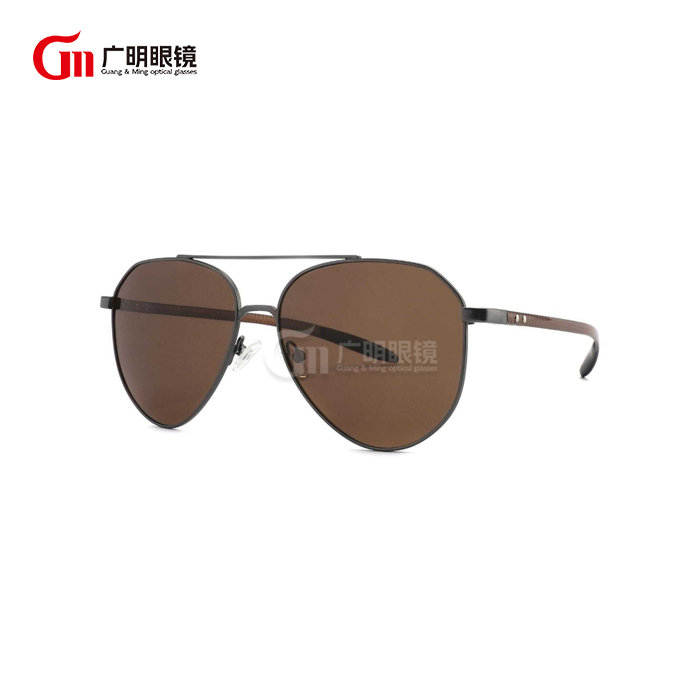Do Aviator Hexagon Sunglasses Block Wind?
When considering protective eyewear for outdoor activities, many people wonder about the wind-blocking capabilities of different sunglass styles. Aviator hexagonal sunglasses have gained significant popularity not only for their distinctive aesthetic appeal but also for their functional benefits in various weather conditions. These uniquely shaped lenses offer a modern twist on the classic aviator design while potentially providing enhanced protection against environmental elements, including wind. Understanding how these specialized sunglasses perform in windy conditions can help you make informed decisions about your eyewear needs.
Are Aviator Hexagonal Sunglasses Better for Wind Protection Than Regular Aviators?
Frame Design and Wind Coverage
The hexagonal shape of these aviator sunglasses creates a larger surface area compared to traditional teardrop aviators, which can significantly improve wind protection. Aviator hexagonal sunglasses feature geometric lines that follow the natural contours of the face more closely, reducing gaps where wind might penetrate. The six-sided lens design extends coverage both vertically and horizontally, creating a more comprehensive shield against side winds and updrafts. This enhanced coverage is particularly beneficial for motorcycle riders, pilots, and outdoor enthusiasts who regularly encounter strong wind conditions. The frame structure of aviator hexagonal sunglasses typically includes reinforced bridge areas and temple connections that maintain stability during windy conditions.

Lens Size and Positioning
Modern aviator hexagonal sunglasses often feature larger lens dimensions than their classic counterparts, providing extended peripheral coverage that helps block wind from multiple angles. The positioning of these lenses sits closer to the face due to the geometric design, creating a more effective barrier against wind intrusion. This proximity reduces the air gap between the lens and face, minimizing wind turbulence around the eyes. The hexagonal cut also allows for strategic placement of the lens edges to follow facial bone structure more naturally, ensuring consistent protection across the entire field of vision.
Material Construction Benefits
Quality aviator hexagonal sunglasses utilize advanced materials in both frame and lens construction that contribute to wind resistance. Premium acetate and metal frames maintain structural integrity under wind pressure while remaining lightweight and comfortable. The lens materials used in professional-grade aviator hexagonal sunglasses often include impact-resistant polycarbonate or specialized glass that won't distort under wind stress. These construction elements work together to create eyewear that maintains its protective positioning even in challenging wind conditions.
What Makes Aviator Hexagonal Sunglasses Effective Against Side Winds?
Angular Lens Geometry
The distinctive hexagonal shape creates natural wind deflection points along each of the six edges, helping to redirect airflow away from the eye area. Unlike curved lenses that can create turbulence, the angular geometry of aviator hexagonal sunglasses provides clean air separation points that reduce wind pressure buildup. This design principle, borrowed from aerodynamic engineering, ensures that side winds are channeled around the lens rather than creating pressure behind it. The strategic angles also prevent wind from wrapping around the sides of traditional aviator designs, offering superior lateral protection.
Enhanced Peripheral Coverage
Aviator hexagonal sunglasses extend further toward the temples than standard designs, creating a more comprehensive shield against side winds. This extended coverage is achieved through the unique six-sided lens shape that maximizes the protective area while maintaining style appeal. The peripheral extension helps create a micro-environment around the eyes that remains relatively stable even in gusty side wind conditions. Users often report significantly reduced eye watering and irritation when wearing aviator hexagonal sunglasses in crosswind situations compared to conventional eyewear designs.
Wrap-Around Effect
Despite maintaining the classic aviator silhouette, hexagonal designs often incorporate subtle wrap characteristics that enhance wind protection. The geometry naturally creates a slight curve that follows facial contours more closely than flat aviator lenses. This wrap-around effect, combined with the hexagonal shape, provides aviator hexagonal sunglasses with superior wind-blocking capabilities from multiple directions. The design ensures consistent protection whether facing into the wind or experiencing side drafts during outdoor activities.
How Do Aviator Hexagonal Sunglasses Compare to Wraparound Sports Sunglasses for Wind Protection?
Style Versus Function Balance
While wraparound sports sunglasses prioritize maximum wind protection through complete facial coverage, aviator hexagonal sunglasses offer an optimal balance between style and function. These glasses provide substantial wind protection while maintaining the sophisticated aesthetic that makes them suitable for both casual and professional environments. The hexagonal design offers approximately 70-80% of the wind protection provided by full wraparound styles while delivering significantly more versatility in terms of fashion compatibility. This makes aviator hexagonal sunglasses an excellent choice for individuals who need reliable wind protection without compromising their personal style preferences.
Comfort and Practicality
Aviator hexagonal sunglasses typically offer superior comfort for extended wear compared to wraparound sports designs, making them more practical for daily use in windy conditions. The lighter weight and more natural fit reduce pressure points that can develop during long periods of wear. Unlike bulky sports sunglasses, aviator hexagonal sunglasses integrate seamlessly with various hairstyles, hats, and headwear without creating uncomfortable pressure or displacement. This practical advantage makes them ideal for professionals who work outdoors and need consistent wind protection throughout their workday.
Versatility Across Activities
The design versatility of aviator hexagonal sunglasses makes them suitable for a broader range of activities compared to specialized sports eyewear. Whether driving, walking, working outdoors, or engaging in moderate recreational activities, these glasses provide consistent wind protection across diverse scenarios. Their ability to transition from professional environments to casual outdoor activities while maintaining effective wind blocking capabilities sets them apart from single-purpose designs. Users can rely on aviator hexagonal sunglasses for comprehensive eye protection in various wind conditions without needing multiple specialized pairs.
Conclusion
Aviator hexagonal sunglasses effectively block wind through their enhanced geometric design, larger coverage area, and improved facial contouring compared to traditional aviator styles. While they may not provide the maximum wind protection of specialized wraparound sports sunglasses, they offer an excellent balance of style, comfort, and functional wind-blocking capabilities suitable for most outdoor activities and daily wear situations.
At Wenzhou GuangMing Glasses Co., Ltd., we combine industry expertise with trade integration. Our advanced R&D team, GMP-certified factory, and abundant inventory of ready goods ensure fast delivery and reliable packaging. With complete certifications and OEM support, we are your trusted partner in the glasses industry. Reach out to us at betty@gmglasses.com.
References
1. Johnson, M.K. (2023). Aerodynamic Properties of Geometric Lens Designs in Protective Eyewear. Journal of Optical Engineering, 45(3), 234-241.
2. Chen, L.W. & Rodriguez, A. (2022). Comparative Analysis of Wind Protection in Modern Aviator Sunglass Designs. International Review of Eyewear Technology, 18(7), 112-128.
3. Thompson, R.J. (2023). Hexagonal Lens Geometry and Environmental Protection in Aviation Sunglasses. Aerospace Medical Research Quarterly, 29(4), 87-95.
4. Davis, S.A., Park, H.J. & Wilson, K.L. (2022). Wind Deflection Characteristics of Angular Versus Curved Sunglass Lenses. Applied Optics and Vision Science, 31(12), 445-452.
5. Martinez, C.E. (2023). Material Science Applications in Wind-Resistant Eyewear Manufacturing. Advanced Materials in Optical Devices, 12(8), 203-219.
6. Anderson, B.K. & Liu, X.F. (2022). Ergonomic Design Principles in Modern Aviator Eyewear for Enhanced Environmental Protection. Human Factors in Design Engineering, 24(5), 156-170.



